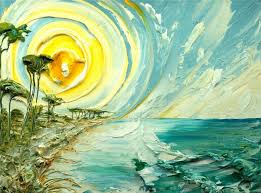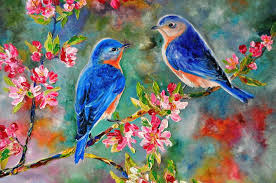STYLES AND DIRECTIONS IN THE FINE ART (part 1)
 The number of styles and directions is huge, if not endless. The key feature by which works can be grouped by style is the unified principles of artistic thinking. The change of some methods of artistic thinking by others (alternation of types of compositions, methods of spatial constructions, peculiarities of color) is not accidental. Historically changeable is our perception of art.
The number of styles and directions is huge, if not endless. The key feature by which works can be grouped by style is the unified principles of artistic thinking. The change of some methods of artistic thinking by others (alternation of types of compositions, methods of spatial constructions, peculiarities of color) is not accidental. Historically changeable is our perception of art.
Building a system of styles in a hierarchical order, we will adhere to the Eurocentric tradition. The largest in the history of art is the concept of the era. Each era is characterized by a certain “picture of the world”, which consists of philosophical, religious, political ideas, scientific ideas, psychological characteristics of worldview, ethical and moral norms, aesthetic criteria of life, which distinguish one era from another. These are the Primeval Age, the era of the Ancient World, Antiquity, the Middle Ages, the Renaissance, New Time.
Styles in art do not have clear boundaries, they smoothly pass one into another and are in continuous development, mixing and counteraction. Within the framework of one historical art style, a new one is always born, and that, in turn, passes into the next. Many styles coexist at the same time and therefore there are no “pure styles” at all.
Several styles can coexist in the same historical era. For example, Classicism, Academism and Baroque in the XVII century, Rococo and Neoclassicism in the XVIII, Romanticism and Academism in the XIX. Such styles as, for example, classicism and baroque are called large styles, since they apply to all types of art: architecture, painting, arts and crafts, literature, music.
It should be distinguished: artistic styles, directions, trends, schools and features of individual styles of individual masters. Within the same style, there may be several artistic directions. The artistic direction consists of both typical signs for this era, and of peculiar ways of artistic thinking. Art Nouveau style, for example, includes a number of directions of the turn of the century: post-impressionism, and symbolism, and Fauvism, etc. On the other hand, the concept of symbolism as an artistic direction is well developed in literature, while in painting it is very blurry and unites artists so stylistically different that it is often interpreted only as a worldview uniting them.
Below are the definitions of epochs, styles and trends that are somehow reflected in contemporary fine and decorative art.
Gothic Gothic is an artistic style that formed in the countries of Western and Central Europe in the XII-XV centuries. It was the result of the centuries-old evolution of medieval art, its highest stage and at the same time the first ever pan-European, international artistic style. He embraced all types of art – architecture, sculpture, painting, stained glass, book decoration, decorative and applied art. The basis of the Gothic style was architecture, which is characterized by upwardly pointed arched arches, multi-color stained-glass windows, visual dematerialization of form.
Elements of Gothic art can often be found in modern interior design, in particular, in mural paintings, less often in easel painting. Since the end of the last century, there has been a Gothic subculture, clearly manifested in music, poetry, clothing design.
Renaissance Renaissance – (French Renaissance, Italian Rinascimento) The era in the cultural and ideological development of a number of countries in Western and Central Europe, as well as some countries of Eastern Europe. The main distinguishing features of the culture of the Renaissance: secular nature, a humanistic worldview, appeal to the ancient cultural heritage, a kind of “revival” of it (hence the name). The Renaissance culture possesses specific features of the transitional era from the Middle Ages to the new time, in which the old and the new, intertwined, form a kind of, qualitatively new alloy. The difficult question is the chronological borders of the Renaissance (in Italy – the 14-16 centuries, in other countries – the 15-16 centuries), its territorial distribution and national characteristics. Elements of this style in contemporary art are often used in wall paintings, less often in easel painting.
Mannerism Mannerism – (from the Italian maniera – reception, manner) flow in European art of the XVI century. Representatives of mannerism departed from the renaissance harmonious perception of the world, the humanistic concept of man as a perfect creation of nature. A keen perception of life was combined with a programmatic desire not to follow nature, but to express the subjective “inner idea” of an artistic image that was born in the soul of the artist. Most clearly manifested in Italy. For Italian mannerism of the 1520s.




